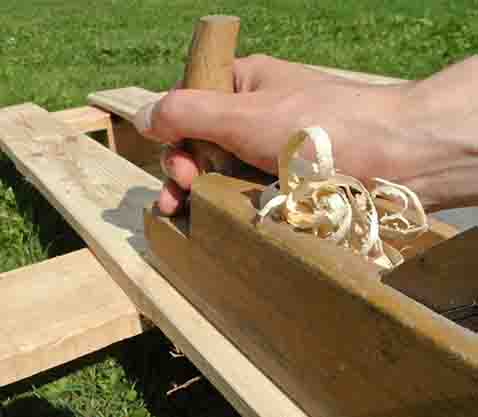
Planing wood: For smooth surfaces – The classic technique in woodworking
The plane is the traditional tool used by carpenters, and it is still considered their guild sign today. Despite all the technical developments, its shape and handling have hardly changed to this day.
So that the shavings fly when planing, what matters is the exact setting of the plane iron and the correct guidance of the plane.
When planing, the iron should remove a chip of even thickness. For that you have to go to Rauhbank, Putz- and double planing the flap can be adjusted. It serves as a chip breaker and must be about 1 mm above the cutting edge. The blade is first in the chip hole, the opening in the plane body, slightly wedged, aligned by gentle blows with a hammer, that the cutting edge is parallel to the plane sole 1 mm protrudes beyond this, and then wedged.
Since the upper body goes with the planing, you stand sideways parallel to the workpiece, put the outside foot forward, to shift body weight. So that the planer does not tilt at the beginning and end of the workpiece, must first on the front part, then apply more pressure to the back of the slicer.
If thin and long, curly shavings fly, makes planing really fun.
Iron and flap are clamped in the workbench. Tighten the screw slightly. It secures itself after relaxing by spring pressure.
Insert the blade into the chip hole of the plane and initially clamp the wedge in the appropriate guides only by hand.

A look over the plane sole shows you, whether the blade is parallel to the plane sole and at the correct distance from the plane mouth. Otherwise align and clamp again. The wedge is released by a counterblow.
precision planer
Planers are now being offered, where the blade is fixed in the plane body by a tension screw. The chip thickness can be adjusted to a tenth of a millimeter with an additional adjustment screw. A hammer is also no longer required for the parallel adjustment of the cutting edge to the sole. The iron can be tilted to the right or left with the press of a thumb using a regulator.